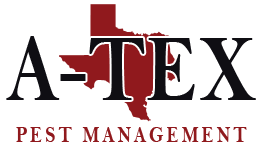In the pest control industry, there are many different aspects. When it comes to the pest control trade, many terms and phrases are thrown around that are fairly obvious to their meaning when applied to pest control, where others will leave you scratching your head. Volumes could be written, but we at A-Tex Pest Management would like to share a handful of the common terms used in pest control for a better understanding.
Pest Control Terminologies
Action threshold: Action threshold determines what action is required to prevent damage from exceeding tolerable levels and is used to count the number of pests or level of pest damage.
Bait: An attractive allurement and a slow-acting poison are the 2 components and is a designed insecticide with a delayed toxicity.
Biological pesticide: A chemical engineered from plants, bacteria, fungi, or other non-manmade synthesis, used for pest control.
Conventional pesticide: Conventional pesticides are used for pest control and derive of manmade chemicals.
Harborage: Pest habitats such as clutters of stacks of newspapers, cardboard boxes, and other such examples are examples of harborage; a shelter for pests.
Insecticide: A pesticide designed to kill and/or control insects.
IPM: IPM uses biological knowledge of pests and pest behavior, where the specialists apply their expertise to implement long-term and the least-risk solutions to maintain insect, nematode, weed, mite, disease, or vertebrate pests at tolerable levels. Strategies are designed to resolve factors that contribute to pest problems in an effort to avoid the need to take action in the future. Applications are opted to prevent damage from pests and have the least risk to humans or other non-pests organisms.
Key pest: A key pest is an insect, rodent, weed, mite, disease, nematode that generally inflicts unacceptable damage and requires control action.
Monitoring: One of several steps in an effective IPM plan that determines the types of pests and the infestation levels at each site location by regularly inspecting ongoing sites as well as trapping.
MSDS: MSDS, or material safety data sheets, includes the details of the hazards associated with chemicals as well as information on their safe uses and is available for all certified pesticides.
Pest: A term often applied to an organism when it causes a problem to humans. Pests generally include insect, mite, weed, vertebrate, microbe, disease, nematode, and so on for example.
Pesticide: Used to control and/or kill pests, pesticides is a chemical substance.
Pesticide Residue: Manifesting following an application of a pesticide, the pesticide residue is a film left behind on the plant, soil, container, equipment, handler, and so on.
Residual Insecticides: A long lasting insecticide that remains active on an applied surface over time.
Rodenticide: Any chemical agent or pesticide that targets rodents.
Sanitation: One of several steps in an effective IPM plan, a form of pest control that involves routine maintenance, removal of clutter removal of clutter cleaning, and harborage.
Pest Inspections, Treatment, Control, Removal & More in Austin, Round Rock, Leander, Pflugerville & Cedar Park Texas
If you heard a term that you are uncertain of, don’t hesitate to ask A-Tex Pest Management while we are engaged in routine maintenance or taking care of an infestation. Call us today!










